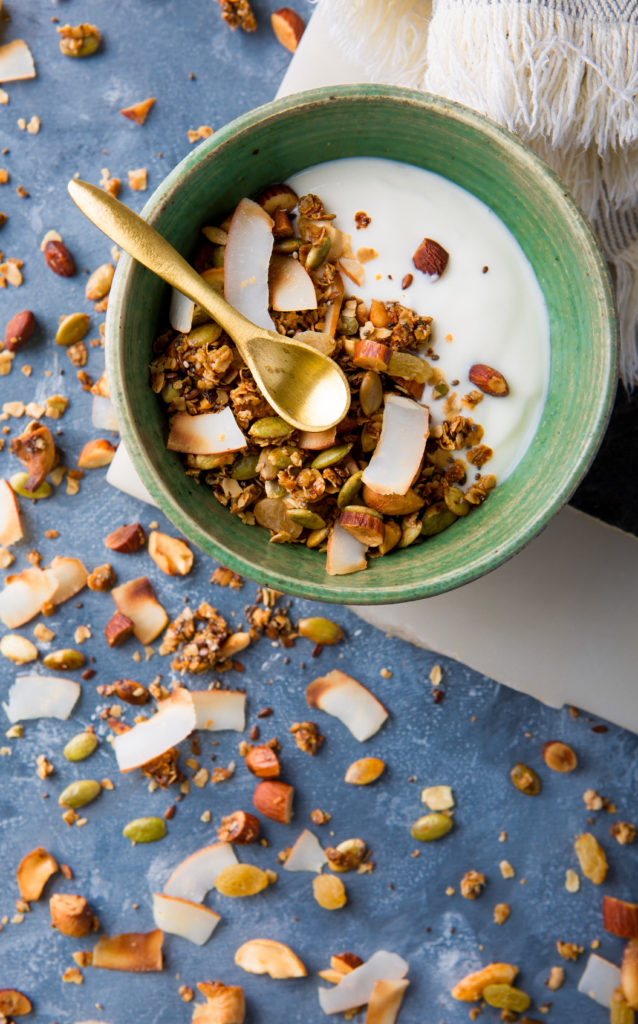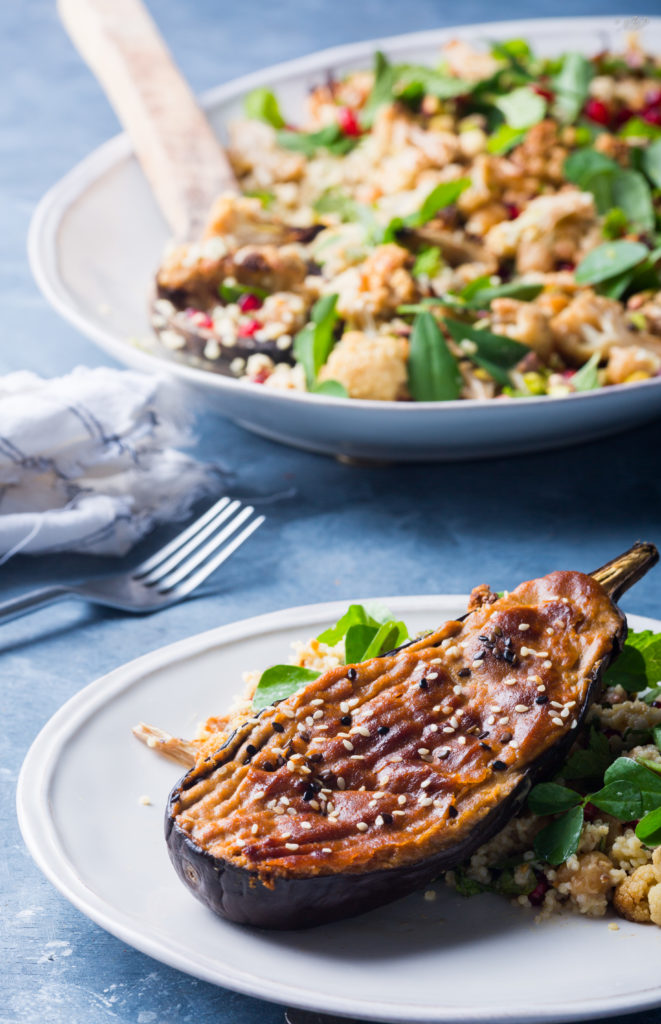Eating Mindfully in a Digital World

Sarah Nicole Edwards, Founder, Copper + Cloves & Health Coach, is on a mission to prove that eating well does not mean boring or restrictive food. Sarah studied with the Institute of Integrative Nutrition and is a certified Health and Wellness Coach. She uses a habit-based approach to support people to adopt positive health-promoting behaviours. She has enabled clients to transform their attitude to food, to crave whole foods, while drastically reducing the amount of sugar in their diet and helping them quit smoking. You can find her serving colourful, nourishing food at pop-ups, yoga brunches as well as leading cooking classes and mindful eating workshops across Bangalore.

Sarah Nicole Edwards, Founder, Copper + Cloves & Health Coach, is on a mission to prove that eating well does not mean boring or restrictive food
Photo credit: Neel Bhupathi
“When I talk to people about food and nutrition, I am struck by how many share a really ‘difficult’ relationship with food. People tell me they ‘have no willpower’ to eat well, and the word ‘worried’ (perhaps in relation to an upcoming celebration where there will be lots of food) comes up a lot. There is a tendency towards mindless eating in today’s world-whether it’s eating while scrolling through our phones or wolfing down food between meetings. We are just not conscious of what we are eating or the process of eating. Despite many health-conscious people spending time and effort choosing to eat the healthiest foods, they might not actually have a healthy relationship with food itself.
This paradox has certainly been my experience at several points during my life. I followed healthy eating rules religiously, but I had no present-moment-awareness when choosing or eating food. As a result, I had a tendency to slip into all-or-nothing thinking, especially when I did eat something, which I had labelled as ‘bad’ or ‘unhealthy.’ For example, if I ate a slice of chocolate cake at a birthday, I felt I had slipped up. Then I’d binge on two more slices and all the unhealthy foods, overeating and feeling stuffed, and would often continue to do this all day-telling myself I would start ‘being healthy’ again tomorrow. Consequently, I wasn’t able to find joy in eating, I would eat that second slice of cake quite frantically, while feeling guilty-but knowing I could start with ‘a clean slate’ tomorrow.
In this article I am focusing on tuning in to our body’s innate wisdom around food, slowing down our eating, and becoming more aware of our hunger. Tuning into our satiety cues means having greater awareness of and respect for the signals that tell us when we are hungry and when we are full. When you add this to slow, conscious eating practices, you begin to really reconnect with the pleasure of eating and nourishing yourself, and you’ve laid the foundation of a lovely healthy relationship with food.
I would like to invite you to take a moment to consider what a healthy relationship with food looks like to you. To me it looks like really enjoying the food, eating the right amount, and sometimes choosing to indulge when I want, without feeling a sense of guilt, shame or panic. It’s being relaxed around food.

Photo credit: Neel Bhupathi
Of course, it matters what you eat as well, and eating a varied diet with lots of fresh produce, whole grains, healthy fats and enough protein is all part of having a healthy diet. But until your relationship with food focuses on nourishing yourself, based on what your body needs, it is very difficult to sustainably choose to eat healthily-it will always feel like a set of ‘rules’ which you are trying to follow. Other thoughts and feelings will keep getting in the way of sticking to these rules. If we can implement the practices below until they come naturally to us, our body will begin to crave and naturally turn towards healthy, nutritious foods.
Where can we start?
Here are four key steps to help you tune into your body and build up the habit of honouring your hunger and fullness cues.
1. Ditch the ‘Food Guilt’ Mentality
To really tune into what our body needs, we need to break the cycle of dieting and reduce the restrictive thoughts we have around different foods.
We cannot really be present while eating food if we have really strict rules or diets that dictate that we should be eating at a certain time and spells out what is ‘good’ or what is ‘bad’ for us. To really understand what your body needs, you need to listen to what it tells you that it wants to eat. Listening to a diet book or an Instagram personality telling you exactly what or when to eat interferes with your innate cues. So, the key next step is to ditch those rules that we may have internalised over time.
This can be a little scary at first, because after years of following diets and having categories of what you ‘should’ eat and what is a ‘guilty treat’, you may experience cravings, feelings of shame and anxiety, possibly feelings of being ‘out of control’ around certain foods because you can’t ‘trust yourself’ around it. These feelings really get in the way of listening to the signals your body is trying to tell you about what type of food will best nourish you, and how much food you really need at this particular moment.

By giving ourselves permission to eat whatever we want, we can begin to pay attention to the experience of eating, without interference from this internal, unhelpful chatter. Once you accept that you can eat what makes you feel good, when it feels right, you can relax. That food which you might have restricted for a long time is available to eat whenever you want.
Try noticing the subconscious ways you police your eating that you may have developed, and how this pops up in your mind over the course of your day. With awareness, begin to challenge those thoughts and label them for what they are-diet rules that no longer serve you.
2. Eat Slowly and Mindfully
Slowing down the pace of eating sounds easy enough, but it can be hard to stick to consistently. The first step is to ensure you take a moment before you start eating. Take 20 seconds to look at the food on your plate and really think about how grateful you are that you have enough to eat, and that you have choice in what you eat. Try to think about the journey the food has been on, and who might have been involved in that journey, and send gratitude their way, whether it is a farmer, the chef in the kitchen, or a worker in your canteen. Appreciate the colours, smells and textures of the food in front of you. This practice can remind you to eat more slowly!
You can also try counting to help slow you down until you naturally eat slowly. Chewing your food properly is an important part of digestion! Aim to chew your food at least 20 times-it will seem like a lot at first, but keep counting and focusing on the experience of eating.
Put your fork down between every mouthful, let your hand rest on the table while you consciously focus on the flavour of the food while you chew. Most of us are already finding our next bite before we have even swallowed the food in our mouths. That is actually a distraction from the present moment. Putting your fork down, enjoying the food or focusing on the company of people you might be sharing a meal with can enable you to enjoy the experience more
Chew, swallow and take a conscious breath before you start preparing your next bite!

Photo credit: Neel Bhupathi
3. Use a Hunger Scale to Assess Hunger and Satiety
Really tuning into your hunger levels and picking up on satiety cues is the next step to eating in this more intuitive way.
Sometimes we eat even when we are not hungry. This might be due to boredom, a strong urge that compels us to eat, or maybe as a form of procrastination. Sometimes we don’t eat even eat when we are hungry. Eating when not hungry and vice versa interferes with the innate cues from our body about how much food we need to be healthy. But this is not something we need to feel bad about-it is totally normal over a lifetime of exposure to a culture revolving around diets and our family’s eating habits, to develop a mindset that interferes with our intuition around food. It is never too late to change this.
People tend to be quite good at the extreme levels of this – “I’m so hungry I could pass out!” – but might miss the gentler signs from their body that they are hungry, and become ravenous, eat very fast, and then as a result miss gentle satiety cues.
This is a well-researched practice that can help you to tune in. It’s called ‘the hunger scale’. It is very simple. Think of your hunger as a scale of 1-10. One is ravenous-really, really hungry. 5 is neutral. 10 is stuffed-feeling nauseous from eating so much. The key to using the hunger scale is to check in on your hunger levels. Assign a number before you eat and then check the scale throughout your eating experience. You could note the number down in a journal or on your phone, or you could simply make a mental note.

Use the scale as a tool to help you to get into the habit of noticing how physically hungry or full you are. You can begin to pay more attention to physical cues such as a growling stomach, gentle pangs or a feeling of emptiness. But also, mental cues such as the thought of food feeling very appealing.
Aim to eat when you are around a 3-pleasantly hungry. Eat slowly and consciously and observe how you are feeling. Notice how good your food tastes at first when you are really hungry. Ask yourself what flavours you are experiencing. Pause half-way through and check in on the taste and your hunger levels. The intensity of the flavours will get less intense and pleasurable as you reach fullness. What number are you on the scale? Are you satisfied or are you still hungry? If you are still hungry, and the food still tastes fantastic, then keep eating slowly and consciously. Taking regular pauses to reassess can help you as you practice.
Aim to stop eating before you reach a 7, practice stopping at a 6.5, pleasantly satisfied, not uncomfortably stuffed. When you pay close attention, your body will send you clear signals when you have had enough food. If you really savour the food and eat slowly, you will get better at finding that point when it is right to stop eating. You will get a pleasant feeling of satiety in your stomach.

It can be hard to stop when you reach pleasant satiety. Many of us grow up being taught it is rude to leave anything on the plate. You will offend your host, your cook, your mum. But remember, you are not a human garbage can and eating excess food, more than your body needs or wants, doesn’t solve any of the world’s problems. Furthermore, eating slowly and consciously will show any host how much you are enjoying and savouring the food. Once you are pleasantly full, stop eating.
The habits we learn as children can become deeply ingrained. This is a chance to intentionally change the way you eat as an adult, trusting your body’s intuition. Try practicing using the scale each time you eat over the next week. Notice how you feel while eating and once you stop- what sensations can you observe? The more you practice observing your physical hunger cues (and differentiating them from just wanting to eat), the stronger the signals will become. This practice creates a feedback loop that allows you to make more intuitive decisions around when to eat, what to eat and how much to eat.

Tip 4: Be Kind to Yourself
The most important part of this is that you don’t beat yourself up if you eat past the point of fullness. If you end up over-eating, recognise that this is not a big deal. Beating yourself up just turns this into a new rule and essentially becomes another diet.
The point is, eating in this way is supposed to be enjoyable and satisfying. As you practice this habit, you can expect to take more pleasure out of eating, gradually reconnecting with your body. Along the way, there will be times when you do not eat according to your hunger and satiety cues. And that is ok. It takes time to ingrain a habit. And even once you feel eating intuitively is an ingrained habit, there may be times where you eat when you are not hungry-perhaps your mom made your favourite kulfi and you want to share that moment with her even though you are stuffed. That is a conscious and positive choice.
This is not about creating a new notion of perfection. This is about getting back to truly enjoying food and letting you be your guide for how much to eat.





